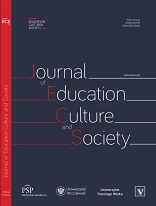A Study of the Understated Violence Within Social Contexts Against Adolescent Girls
A Study of the Understated Violence Within Social Contexts Against Adolescent Girls
Author(s): Shivangi Nigam, Niranjana SopernaSubject(s): Social Sciences, Gender Studies, Sociology, Criminology, Studies in violence and power, Victimology, Sociology of Culture
Published by: Fundacja Pro Scientia Publica
Keywords: Understated Violence;Haryana state (India);Social Contexts;Adolescent Girls
Summary/Abstract: Violence against women is linked to their disadvantaged position in the society. It is rooted in unequal power relationships between men and women in society and is a global problem which is not limited to a specific group of women in society. An adolescent girl’s life is often accustomed to the likelihood of violence, and acts of violence exert additional power over girls because the stigma of violence often attaches more to a girl than to the perpetrator. The experience of violence is distressing at the individual emotional and physical level. The field of research and programmes for adolescent girls has traditionally focused on sexuality, reproductive health, and behaviour, neglecting the broader social issues that underpin adolescent girls’ human rights, overall development, health, and well-being. This paper is an endeavour to address the understated or disguised form of violence which the adolescent girls experience within the social contexts. The parameters exposed under this research had been ignored to a large extent when it comes to studying the dimension of violence under the social domain. Hence, the researchers attempted to explore this camouflaged form of violence and discovered some specific parameters such as: Diminished Self Worth and Esteem, Verbal Abuse, Menstruation Taboo and Social Rigidity, Negligence of Medical and Health Facilities and Complexion- A Prime Parameter for Judging Beauty. The study was conducted in the districts of Haryana (India) where personal interviews were taken from both urban and rural adolescent girls (aged 13 to 19 years) based on a structured interview schedule. The results revealed that the adolescent girls, both in urban as well as rural areas were quite affected with the above mentioned issues. In urban areas, however, due to the higher literacy rate, which resulted in more rational thinking, the magnitude was comparatively smaller, but the difference was still negligible.
Journal: The Journal of Education, Culture, and Society
- Issue Year: 8/2017
- Issue No: 2
- Page Range: 29-41
- Page Count: 13
- Language: English

